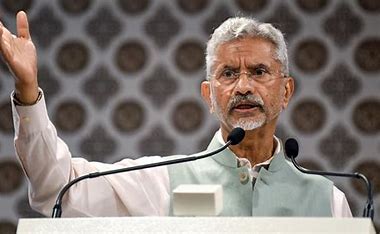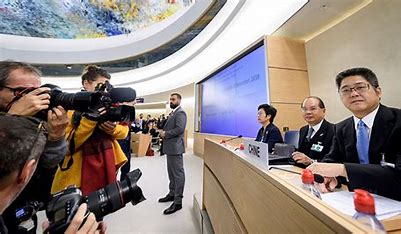
The much-hyped National Research Foundation conceived by the new education policy will likely be born soon. The Union Cabinet has approved the National Research Foundation (NRF) Bill 2023 to be introduced in Parliament. The Bill is already listed amongst the new Bills proposed to be taken up during the monsoon session.
The Bill seeks to establish an exclusively dedicated agency for funding and supporting research in the country. The idea was mooted in detail by the Draft National Education Policy (DNEP) in 2019 and was carried forward by the National Education Policy (NEP) as approved by the Cabinet in 2020.
The Bill also seeks to repeal the Science and Engineering Research Board (SERB) Act 2008. SERB, a statutory body of the Department of Science and Technology (DST), has served almost the same purpose in Science and Technology as NRF is supposed to across all disciplines. This is in deviation from the NEP, which had insisted that the existing agencies, including DST, must continue to finance and support research according to their priorities.
NRF is conceived in recognition of the crucial role that investment in research, development, and innovation plays in driving a nation’s intellectual and material prosperity. NRF is envisaged as an apex body to seed, grow and promote research by fostering a culture of innovation in universities, colleges, research institutions, and laboratories across the country. NRF would fund outstanding peer-reviewed research, catalyse quality academic research, and create a comprehensive approach to transforming the quality and quantity of research in India.
It is also expected to facilitate collaboration between industry, academia, government, and research institutions to create a conducive research ecosystem in the country. It is thus likely to develop an interface mechanism for their participation and contribution to research and funding. Critically, the NRF contemplates to democratise scientific research by funding researchers in peripheral, rural, and semi-urban areas that have not been receiving adequate research funding.
Placed under the administrative jurisdiction of DST, NRF shall have an empowered Governing Board headed by the Prime Minister as President, the Union Minister of Science & Technology, and the Union Minister of Education as Vice-Presidents. Besides, the board is proposed to have two members from DST, one from Arts & Humanities, and five from industry.
These are major diversions from the original idea, which had envisaged NRF to be independent and governed by an empowered board comprising eminent scientists. With only one member from Arts & Humanities, the research funding for humanities, social science, commerce, management and education will likely be sidelined.
Further, the decision-making and administration of NRF has been vested in its Executive Council to be chaired by the Principal Scientific Adviser to the Government of India. This, too, may adversely impinge on research funding in humanities and social sciences that have been clamouring for enhancement in research support for a long time.
Even the scientific community is dismayed about the drastic reduction in the financial support to NRF. The draft national education policy 2019 asserted that NRF must get an annual grant of Rs. 20,000 crore (or 0.1% of the GDP). This was a well-considered and, at the same time, pragmatic and easily implementable recommendation.
The recommendation had emanated out of the concerns that India was spending merely 0.65% of its GDP on research which compared quite poorly with the spending in the USA (2.8%), Israel (4.3%), and South Korea (4.2%). The scientific community had hoped that an additional annual investment of 0.1% of GDP over a sustained period would one day get India reckoned among the world leaders.
The proposed additional research spending would take India about 22 years to reach the level of research spending by the US and nearly 37 years to become at par with Israel or South Korea.
Despairingly, the NRF will now receive an annual amount of Rs 10,000 crore subject to a maximum of Rs 50,000 crore over the next five years. Even this meagre sum is proposed to be shared between the government, industry and private philanthropic contributions. The private sector is required to contribute Rs 36,000 crore, whereas the assistance of the central government would be confined to Rs 14,000 crore over five years which would effectively mean an annual contribution of Rs 2,800 crore.
As the NRF Bill intends to repeal SERB Act 2008 and subsume the programmes and activities of SERB into NRF, there is an apprehension that the allocation for NRF would get further reduced due to the likely adjustment of the SERB budget. Given that the annual budgetary allocation to SERB is about Rs 1,000 crore, there is an imminent apprehension that the budgetary allocation to NRF may get limited to Rs 1,800 crore to 2000 crore.
The co-funding model, with contributions from the government and industry, may sound good in theory but may not materialise anytime soon. It is good to have a provision built into the scheme of NRF, but relying upon the industry to contribute more than two and a half times the government contribution is far-fetched.
The new education policy emphasised that India, Mesopotamia, and Egypt have had a rich historical tradition of promoting science, mathematics, and arts. It also implied that significantly enhancing research spending and building a conducive research ecosystem can help India reclaim its legacy and assume a leadership position, truly a Vishvaguru.
Funding is crucial in promoting research and innovation and constitutes a necessary condition for pushing a country into the next higher orbit. In the era of the knowledge economy, investment in research leads to economic growth, prosperity and security of a nation. India cannot afford to behave miserly on this count.
The idea of NRF presents an opportunity for the nation. But the idea must go beyond establishing one more new institution or replacing one institution with another. The idea was conceived as a complete package and must be delivered to mark a significant milestone in the nation’s pursuit of scientific excellence and innovation.
With its broad mandate, collaborative approach, and focus on funding, the NRF has a huge potential to empower researchers, foster a culture of research and innovation, and address critical challenges facing India and the world. NRF can play a pivotal role in propelling India towards becoming a global leader in knowledge creation and technological advancement. But it may fail for want of adequate resources and autonomy.
Furqan Qamar, former Adviser for Education in the Planning Commission, is a Professor, Department of Management Studies, at Jamia Millia Islamia, New Delhi. Views expressed are personal.















